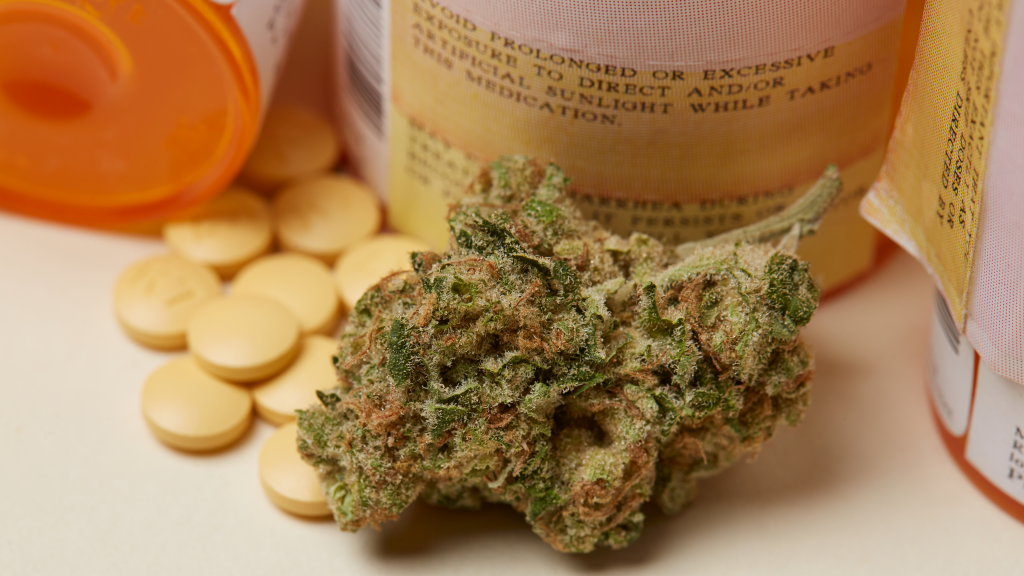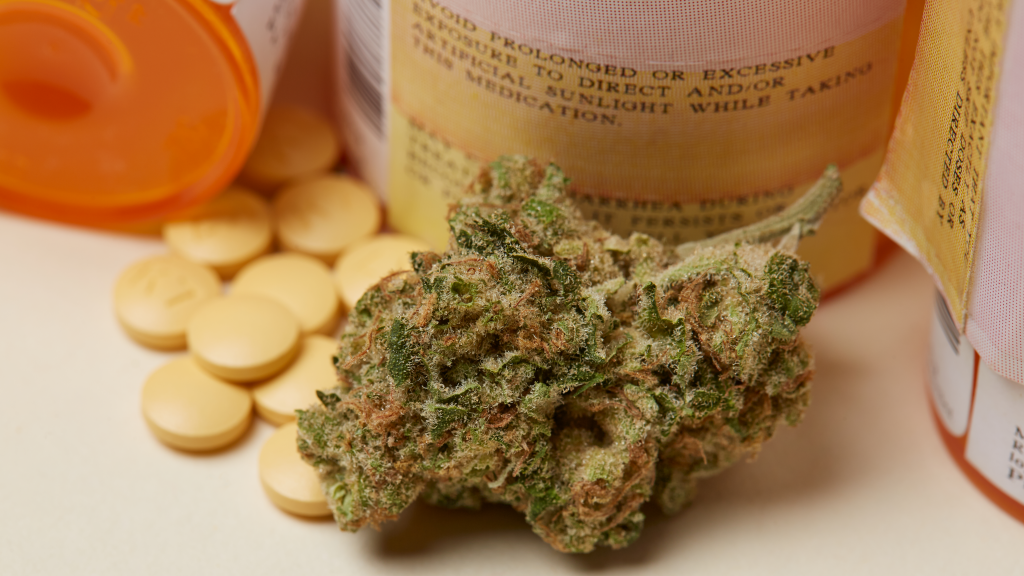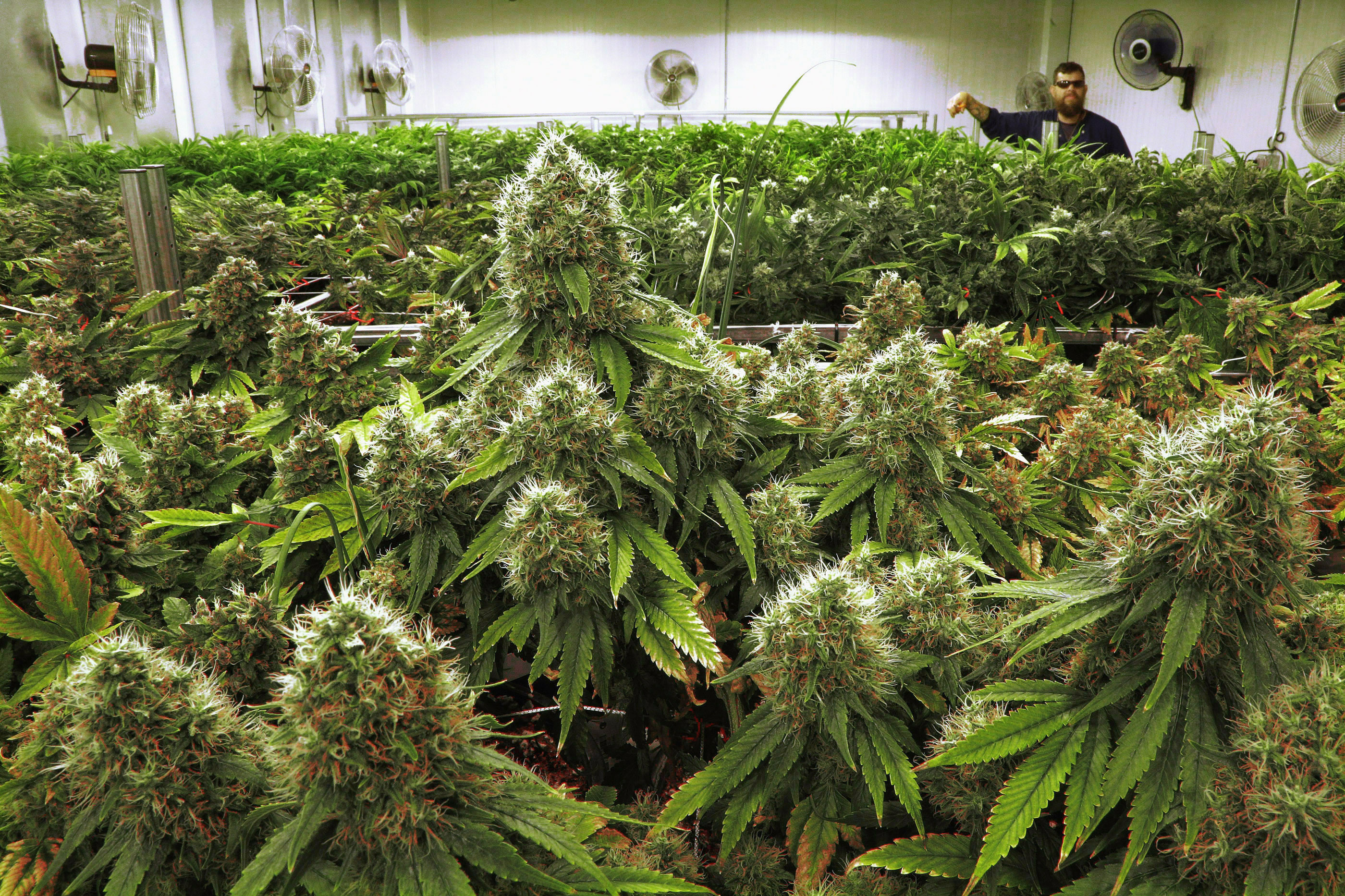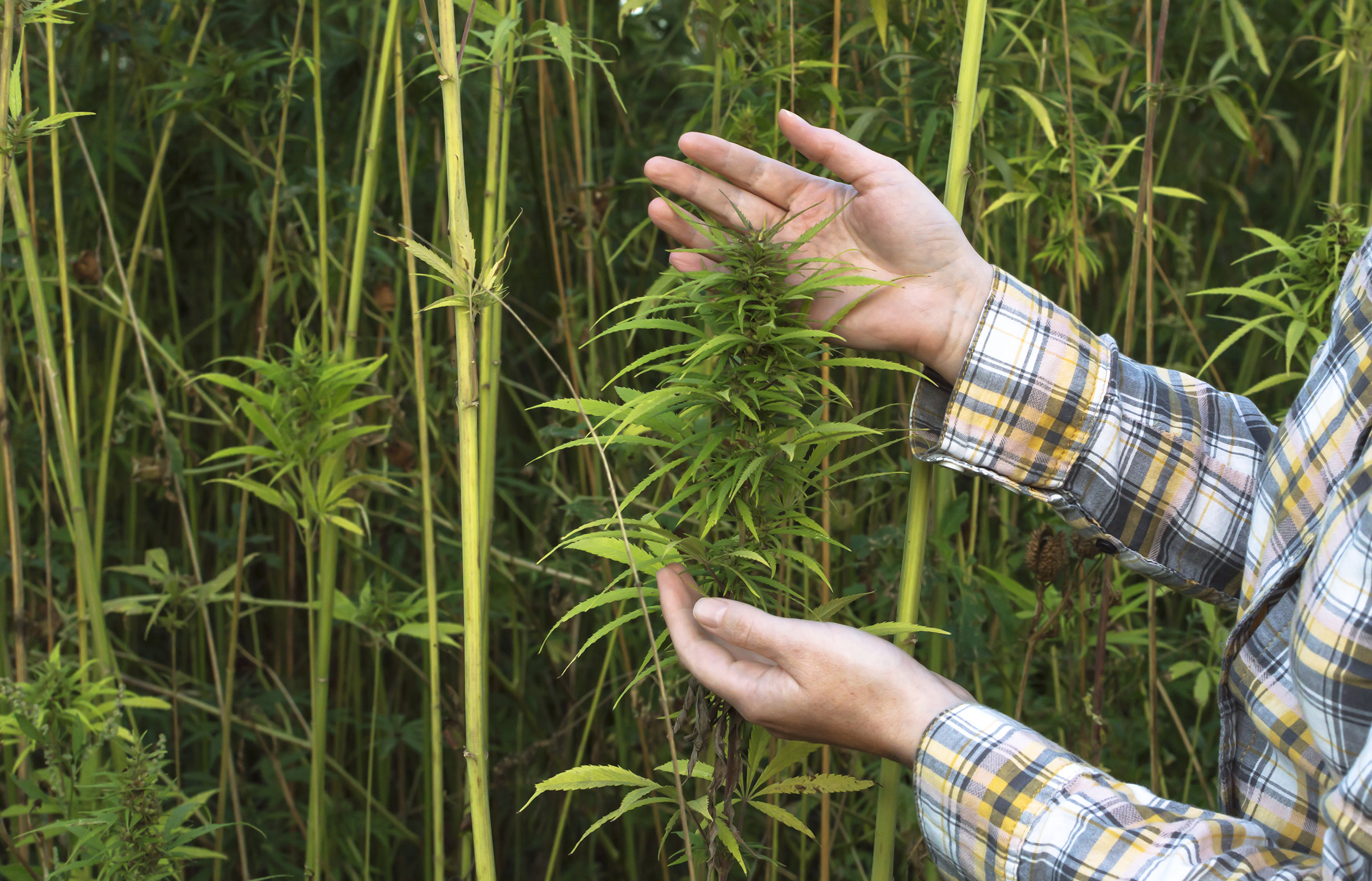
In the face of a devastating epidemic, the pain conversation is changing.
The impact of opioid abuse has a ripple effect that extends throughout society. From the individual to the global economy, drug abuse spares no expense. Nor does it discriminate. Opioid abuse is prevalent in demographics across the board: rich or poor, people of color or white, secular or religious — everybody is affected by the losing battle we’re waging against opioids.
Cristina Alfonso-Zea joined the United States Army and embarked upon a personal journey that took her down a very dark path. Alfonso-Zea was injured during basic training and sustained further injuries while deployed overseas. Throughout her service, Alfonzo-Zea was prescribed opioids to relieve pain for injuries she sustained as a result of the tough nature of a soldier’s job. By the time she was released from the Army, Alfonzo-Zea had developed a dependency on prescription pain drugs.
“As soon as I got out, that same day I went to the VA to get my prescription and just get registered,” she said. “But that’s something that my body needed, so I took precedence in that, and everything else just followed.”
Re-entry into civilian life is far from easy for individuals like Alfonso-Zea who struggle to make sense of the situation, let alone address it. On top of that, the Army was actively ensuring she received a steady supply of prescription painkillers.
The Centers for Disease Control and Prevention (CDC) estimates that, in 2017, 47,600 Americans died from opioid overdose. (Shutterstock photo)
“My injuries in my files said that they would be chronic, so they would be expecting me … to pick up the medication,” she said. “If I didn’t pick them up, they would wonder what’s chronic about it and they would question you and really try to put you into scenarios that you just felt so uncomfortable sometimes. But you had to take the medication or, if not, they would mail it to you.”
As a result of her addiction to prescription painkillers, Alfonso-Zea slipped deeper and deeper into the reclusive recesses of her home, going through the motions of life as if she was but a passenger — all the while feeling something was terribly wrong.
“I didn’t want to leave the house, but I did. I didn’t want to eat, but I had to. So it felt like my life was forced. It was just my body was moving in a robotic state of mind,” she said. “But inside of me, I knew that I didn’t want to feel that way, but I thought, ‘Well, this is what it’s going to be, you know. This is what the Army gave you. This is what you have to take to get over things, you know. This is prescribed by a doctor.’ ”
Eventually, it wasn’t enough. Alfonso-Zea began to self-medicate and experiment with different combinations of drugs — including heroin. “I started mixing in a little bit of heroin in it, heroin with my alcohol, so that was definitely different … I didn’t want to feel one way, so I would try something else. I didn’t want to feel that way. I didn’t – you know, I just couldn’t get a grip.”
Is it Really a Public Health Crisis?
The National Institute on Drug Abuse (NIDA) describes opioids as “a class of drugs that include the illegal drug heroin, synthetic opioids such as fentanyl and pain relievers available legally by prescription such as oxycodone (OxyContin), hydrocodone (Vicodin), codeine, morphine and many others.” The Centers for Disease Control and Prevention (CDC) estimates that, in 2017, 47,600 Americans died from opioid overdose, which made up 67.8% of all drug overdose deaths that year.
Top doctor of the CDC nearly lost his son to fentanyl and calls opioid addiction “the public health crisis of our time” https://t.co/V2QC6mdV0p pic.twitter.com/3qv8CelUIr
— New York Daily News (@NYDailyNews) July 18, 2018
Opioids interact with receptors located on nerve cells throughout the body and in the brain. They’re most commonly used for both short-term pre- and post-operative pain relief and long-term chronic pain management. Every day, more and more people come into contact with opioids under advisement from their doctor for a legitimate condition of pain. In 2017, there were nearly 58 opioid prescriptions written for every 100 Americans.
Dr. Adie Wilson-Poe has a Ph.D. in neuroscience and Weedmaps scientific adviser has spent the past 15 years researching pain and the endocannabinoid system.
“Despite our best efforts to understand the biology of opioids and the effectiveness of opioids — or the ineffectiveness in terms of chronic pain anyway — there’s still a lot of work to be done,” she said. “The average American has, at some point, or will shortly in the future have an opioid prescribed to them.”
The average American has, at some point, or will shortly in the future have an opioid prescribed to them Click To Tweet
More and more, doctors are seeing the class of drugs most commonly prescribed to treat pain in the U.S. tearing apart families and destroying people’s lives.
Dr. Robert Milanes is the founder of Holistic On Call, a medical marijuana doctor service that operates in California and New York, and a doctor of emergency medicine in Southern California. He has had direct experience treating the impacts of opioid addiction in emergency rooms in Los Angeles and Orange counties.
“Every time I tell somebody that their loved one died because of opioids, it sucks it out of me. It makes it hard to do my job,” he said. “Then what’s harder is that I have to go to the next patient like nothing happened.”
Milanes said he feels the misconceptions about addiction in the U.S. play a large role in the growing crisis, and these attitudes cripple efforts to effectively address it. He used the analogy of two types of people who go trick-or-treating on Halloween. One person saves the candy they collect and eats it a little at a time. The second person eats all the Halloween candy at once.
“The sad thing is that the people who can save their Halloween candy for later look at the people who have to eat their whole thing as if these guys are inadequate — they’re weaker,” Milanes said. “But the issue, I feel, is that people are not getting the support that they need. People are not funding mental health. I have patients that go in the ER that are addicted to meth and they come in with psychoses [and] they’re stuck in the ER for three days [while we’re] trying to find them a bed. There’s no funding in it.”
And watching this devastating story unfold has made Milanes re-examine his role and re-evaluate the pain management therapies he recommends to his patients.
“I feel every time I prescribe a narcotic, I might as well give ’em heroin. I might as well let them be on their way and just say, ‘Hey, this is heroin. Good luck,’ ” Milanes said. “Because chances are you’re gonna get addicted. Statistically speaking, if you die from a heroin overdose, it’s because of what we did. You got your medications from a doctor or from somebody who got it from a doctor [before trying heroin].”
Dr. Garland Cowan is an anesthesiologist and founder of the Valley Center for Cannabis Treatment in Las Vegas. Like Milanes, he reevaluated his role in the current state of opioid use in the U.S.and believes a more comprehensive approach to the problem is necessary. The crisis is more than drug abuse, Cowan said. It’s a long-building misunderstanding of a potent substance that, despite having been vigorously studied for medical use as a result of its federally approved status, remains wildly difficult to control.
“It is very, very easy to prescribe an opioid,” Cowan said. “I think a big part of this is also our medical education. For instance, in medical school I learned that as long as a patient was taking an opioid because they were experiencing pain, then there was an almost nonexistent chance that they would become addicted to this. And since then, we have discovered that this is not true.”
Cowan is careful not to completely vilify opioids, however, as they have a legitimate medical application in pain management. Instead, he encourages a more hands-on approach on the part of physicians prescribing these potent painkillers.
“I think we have to realize and put care plans in place, where rather than having an open-ended approach to your prescription for hydrocodone, or Percocet, or whatever,” he said. “That is going to be available only for a specific period of time, and then we’ll convert you to something else.”
The Epidemic Has Great Costs
Curtis Florence, Ph.D., and colleagues of the National Center for Injury Prevention and Control examined data including direct healthcare costs, loss of productivity, and criminal justice system costs to develop an understanding of the total economic burden of opioid addiction and abuse in the U.S. Their study was published in the October 2016 issue of the journal Medical Care and estimates the total burden of the opioid epidemic to be $78.5 billion, with health-care costs making up the bulk of the costs.
In 2013, nearly 2 million Americans met the criteria for abuse and dependence. More than 16,000 deaths from prescription opioid abuse were logged that year. Spending on health care and substance abuse exceeded $28 billion — nearly 35% of the total estimated cost. Most health-care costs were covered by insurance.
Estimates place the total burden of the opioid epidemic at $78.5 billion. (Photo by Gina Coleman/Weedmaps)
When it comes to loss of productivity, struggles with opioid abuse and addiction cost Americans nearly $20 billion, while fatal overdoses resulted in a $21.4 billion burden in the year the data were analyzed. Costs related to criminal justice efforts were $7.7 billion, most of which were covered by state and local entities.
While Florence’s study can’t take into account every factor that may contribute to the societal costs of opioid abuse and addiction, his findings paint a clear picture of a complex and costly problem with few viable solutions in sight.
Garland, too, pointed out the complex nature of estimating the cost of the opioid epidemic.
“Obviously I mean everybody is very conscious of cost of medical care, but I think you have to look at the cost of what remaining on opioids does to an individual, an individual’s family, and society in general,” he said. “And when we realize that it is something — it’s a very, very high-cost, then we will devote the resources that we need to curtailing this epidemic.”
The opioid crisis may have cost the US billions in tax revenue. @YahooFinance has the scoop on the @pennstatehhd study. https://t.co/f1O0j1PbRM
— Penn State Research (@PSUresearch) May 14, 2019
Even the Drug Enforcement Administration (DEA) has examined the burden of the opioid epidemic. In its 2017 National Drug Assessment, the federal agency estimated the total economic burden of prescription drug abuse cost the U.S. $78.5 billion in 2013.
The DEA’s report estimated that more than one-third, or $28.9 billion, of this cost is due to increased health care and substance abuse treatment costs. Other areas in which the opioid epidemic drove economic hardship included workplace costs, criminal justice costs, and police costs. Their report also referenced a 2007 study by the Coalition Against Insurance Fraud, which estimates unscrupulous medical business practices cost the average insurer $10,000 to $15,000 per year.
All told, the DEA estimates the combined economic and societal burden of opioid abuse and addiction to be more than $100 billion. And although the studies vary on the number assigned to the cost, they all point to the vast, deep, and devastating fiscal impact the opioid epidemic has had throughout the country.
All told, the DEA estimates the combined economic and societal burden of opioid abuse and addiction to be more than $100 billion. Click To Tweet
The Trump administration has also examined the burden of the opioid epidemic from a financial standpoint. In a November 2017 report, the White House Council of Economic Advisers (CEA) estimated that the economic cost of the opioid crisis to be $504 billion in 2015, significantly higher than the total estimate of $78.5 billion made in Florence’s study.
“Compared to the recent Florence et al. (2016) study — which estimated the cost of prescription opioid abuse in 2013 — CEA’s preferred estimate is more than six times higher, reported in the table’s last column as the ratio of $504.0 billion to $79.9 billion, which is Florence et al.’s estimate adjusted to 2015 dollars,” the report states.
In March 2018, the White House also released an initiative outlining its plan to stop opioid abuse and reduce the supply and demand of the drug.
Cannabis is A Viable Alternative to Opioids
A consensus is building among citizens, the medical community, and local governments throughout America that, at the very least, more research is needed to determine what role cannabis can play in addressing this heartbreaking epidemic. In a May 2018 study published in Health Care Policy and Law, researchers found that states with legal access to medical cannabis saw an average reduction of more than 3.7 million daily doses of opioids per year.
A February 2018 study conducted by the decriminalization advocacy group Drug Policy Alliance (DPA) found that medical cannabis legalization has been associated with a 23% reduction in opioid dependence or abuse-related hospitalizations and 15% fewer opioid treatment admissions. Moreover, in states with access to medical marijuana, the same study for that overdose death rates were nearly 35% lower than in states with no access to medical marijuana. Following these early signs that cannabis use could reduce opioid-related overdose deaths and addiction, a number of states with medical marijuana, such as Illinois and New Jersey, have started listing opioid use disorder as a qualifying condition.
Research shows those experiencing pain from opioid withdrawal or cancer, may experience pain relief through cannabis, which may lead to a decrease in their use of opioids to treat the pain. (File Photo)
In the discussion portion of the report, researchers pointed out that despite limited research on the analgesic, or pain-relieving, properties of cannabis, some individuals, such as those experiencing pain from opioid withdrawal or cancer, may experience pain relief through cannabis, which may lead to a decrease in their use of opioids to treat the pain.
These ideas are supported by a 2015 report by the National Bureau of Economic Research that concluded “providing broader access to medical marijuana may have the potential benefit of reducing abuse of highly addictive painkillers” and a 2017 patient survey in Cannabis and Cannabinoid Research published by Mary Ann Liebert Inc. that found 97% of the 2,897 patients surveyed strongly agreed that they were able to decrease their use of opiates with the addition of cannabis.
Illinois has taken notice of the positive correlation between medical marijuana legalization and reductions in opioid use. The Alternative to Opioids Act of 2018, or Public Act 100-1114, signed into law on Aug. 28, 2018, led to the creation of the Opioid Alternative Pilot Program (OAPP), allowing patients who have or could receive an opioid prescription to access medical marijuana.
Recreational legalization has also demonstrated a positive effect on the opioid epidemic. Another May 2018 study, also published in Health Care Policy and Law, discovered that states with adult-use cannabis laws had a 6.38% lower rate of opioid prescriptions.
States with adult-use cannabis laws had a 6.38% lower rate of opioid prescriptions. Click To Tweet
While these studies provide evidence of an association between medical cannabis laws and a reduction in opioid mortality rates, further research is needed to establish a definitive link. Fortunately, attitudes toward cannabis are slowly changing. An October 2018 poll conducted by Gallup revealed that 66% of Americans believe cannabis should be legal for recreational use. Meanwhile, a HealthDay/Harris Poll published in July 2018 found that 85% support its medical use.
Overwhelmingly, cannabis is being viewed for its positive potential. Another poll, conducted by CBS News in 2017, also revealed changing attitudes toward substance abuse and addiction, with 69% of respondents stating addiction should be treated as a mental health issue and not a criminal offense.
Using Cannabis for Healing
Wilson-Poe, Cowan, and Milanes attest to the healing benefits of cannabis, having witnessed them first-hand. “There is a lot of evidence that suggests that cannabis not only relieves the acute withdrawal symptom of opioid withdrawal,” Wilson-Poe said. “Beyond that acute phase, once people are detoxified from the opioid dependence, cannabis actually has a much greater role, in my opinion. Cannabis can alleviate the negative emotional state, the anxiety that accompanies chronic drug abuse.”
Cowan and Milanes both recommend cannabis to aid their patients in Nevada and California, respectively, who are struggling with opioid addiction. The two have seen patients’ lives improved as a result of incorporating responsible cannabis use into their routine. In particular, cannabis has been helping Cowan’s patients mitigate the painful physical symptoms of withdrawal as they embark upon gradual detoxification from opioids.
“If you can choose the right regimen of cannabis and cannabis products, then there is a way to gradually decrease the dose of the opioids,” Cowan said. “Some of the pain and discomfort that they feel, if they begin medical marijuana, then they can lessen the effect of these.”
Similarly, Milanes has seen patients in both his emergency medicine and cannabis recommendation practices who have benefitted from cannabis, despite the difficulty doctors face recommending its use.
“I’ve had patients when I started [them on a cannabis regimen] that have weaned off their narcotics, that now tell me ‘I don’t have to rely on pills anymore,’ that now their quality of life is back, that now they have – usually it’s a 50% decrease in pain, and like a 50% increase in function,” he said. “… but we can’t use it, because it’s illegal. I can’t prescribe it — I’m recommending it.”
What’s Next for Cannabis-Assisted Relief?
For people like Alfonzo-Zea, the benefits are crystal clear. “Marijuana really did save my life. After a year of consuming it, I was able to notice a difference within my health. I was able to notice I was sleeping better. I lost weight. Due to me losing weight, I was able to not feel as much pain in my hips, where the injuries were,” she said. “My mood was a little bit – you know, it was uplifting. So now what I do is I’m a medical cannabis patient here in the state of Nevada.”
The common message is that more exploration is needed to fully understand the benefits of cannabis with regard to substance abuse treatment. Access to funding for medical research of cannabis is restricted due to the classification of the plant as a Schedule I substance, determined by the United States government to have no medicinal value. Cannabis’ medicinal value has been scientifically evident for decades.
“Everybody wants data. Everybody wants to know if it’s effective. Everybody wants to know if it’s safe. Everybody wants to know the dose range. But nobody can get the money to answer those questions because the vast majority of the people asking those questions are asking the federal government for money,” Wilson-Poe said. “Until cannabis is no longer considered a Schedule I substance, there will be no avenue for continued research on its safety and efficacy.”















